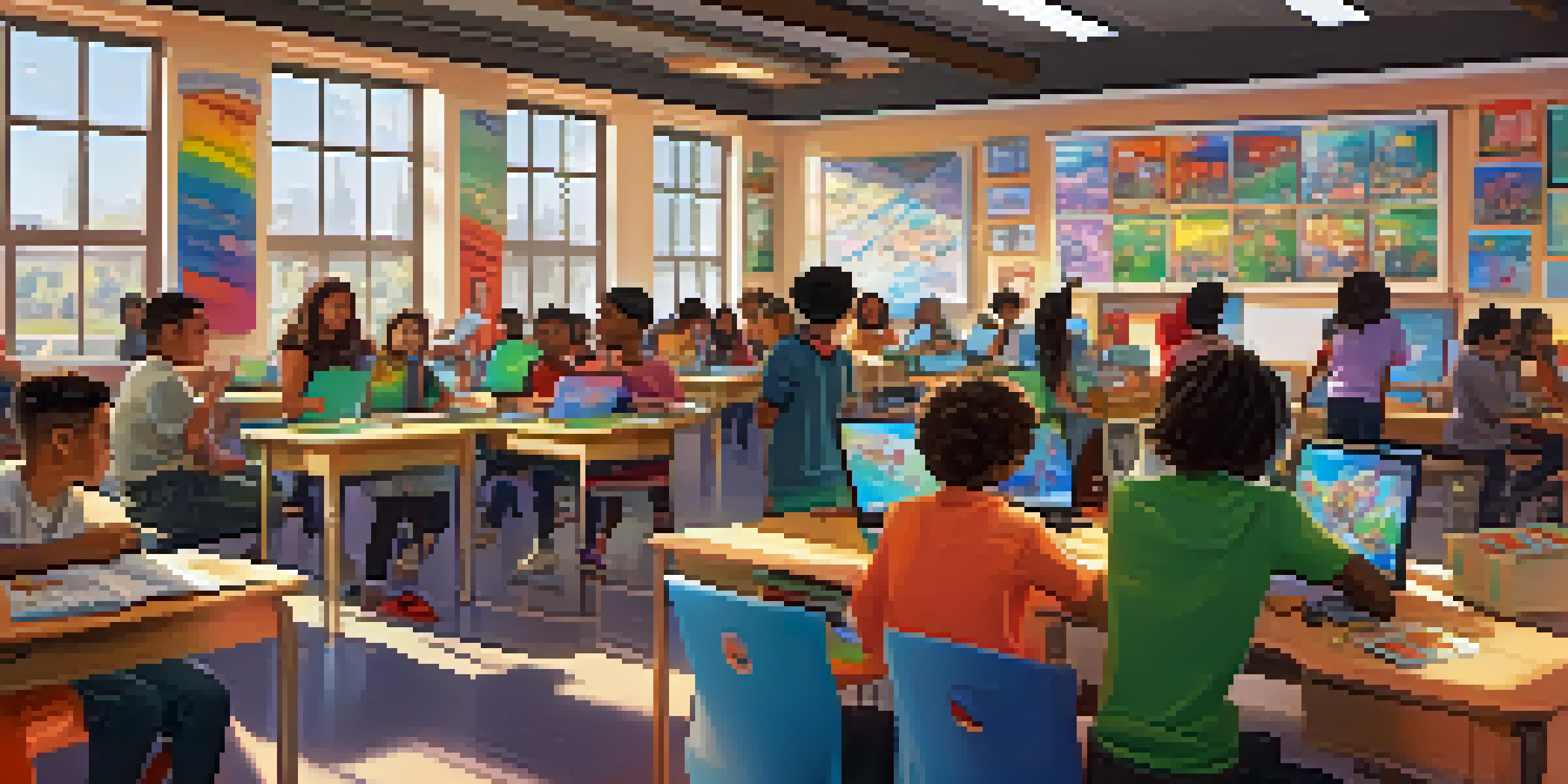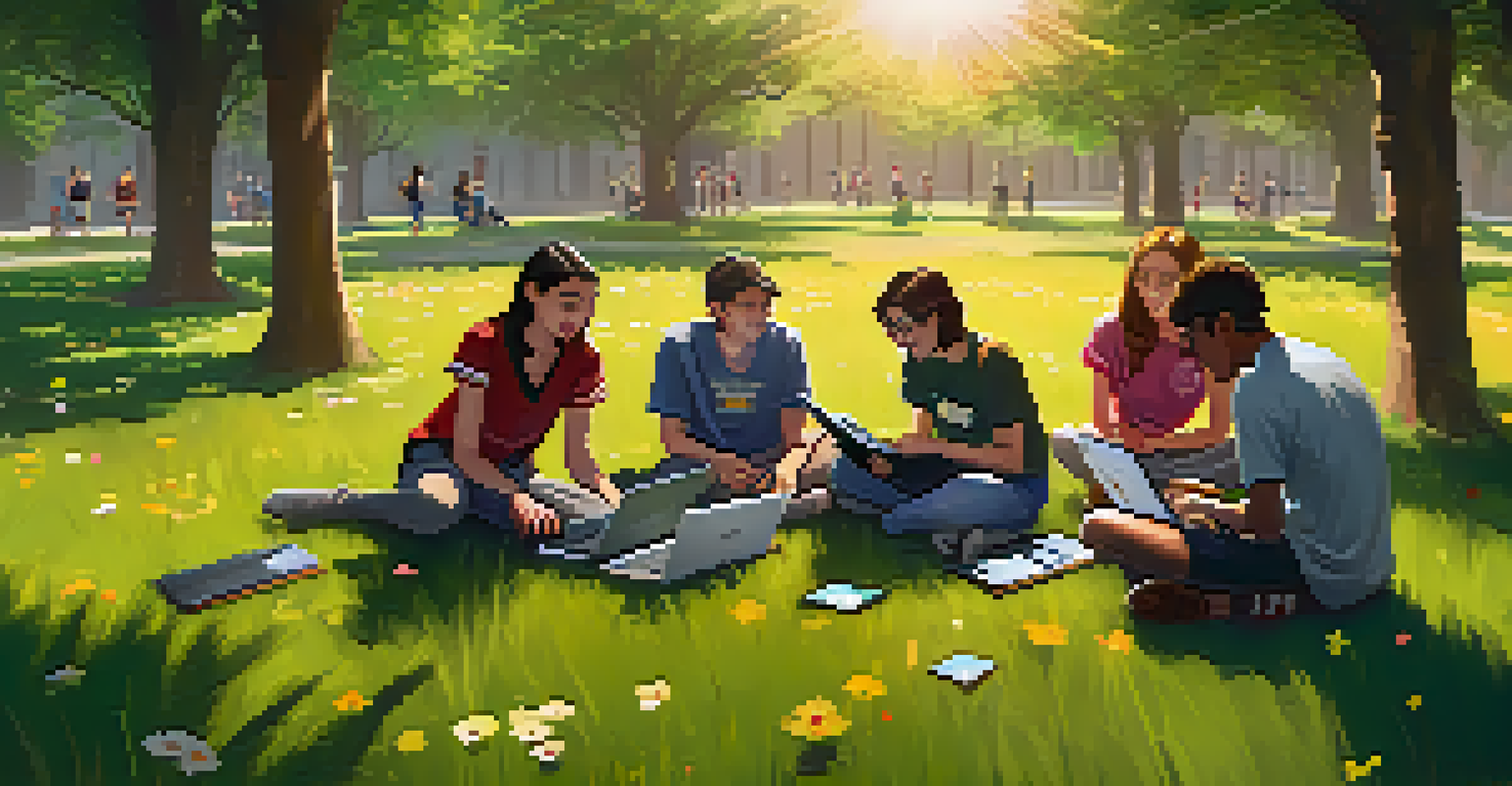Using Multiplayer Games to Foster Collaboration in Education

The Power of Multiplayer Games in Learning Environments
Multiplayer games have transformed how students interact and learn together. By engaging in these virtual worlds, students can develop teamwork skills, communication, and problem-solving abilities. The collaborative nature of these games fosters a sense of community, making learning more enjoyable and effective.
Games are the most elevated form of investigation.
In a multiplayer game, players often work towards common goals, which mirrors many classroom objectives. This format allows students to experience first-hand the value of cooperation and shared responsibility. As they navigate challenges together, they learn to rely on each other's strengths, building trust and camaraderie.
Moreover, the immersive experience of multiplayer games can make complex subjects more accessible. For instance, a game based on historical events can spark interest in those topics, prompting discussions and deeper understanding among peers. This engagement not only enhances learning outcomes but also promotes lasting friendships.
Building Communication Skills Through Gameplay
Effective communication is vital in both educational settings and the workplace. Multiplayer games naturally require players to share strategies, discuss tactics, and coordinate actions. This practice can help students improve their verbal and non-verbal communication skills, preparing them for future collaborative endeavors.

For example, consider a game where players must solve puzzles together. Each participant might have unique information or abilities, necessitating clear dialogue to succeed. As students articulate their thoughts and listen to others, they enhance their ability to convey ideas and respond thoughtfully, which are essential skills in any collaborative environment.
Multiplayer Games Enhance Teamwork
These games foster collaboration, helping students develop essential teamwork and communication skills.
Additionally, the diverse backgrounds of players can enrich these communication experiences. Students can learn to appreciate different perspectives and approaches, fostering an inclusive atmosphere. This exchange of ideas not only strengthens friendships but also encourages empathy and understanding among peers.
Encouraging Critical Thinking and Problem Solving
Multiplayer games often present challenges that require players to think critically and devise creative solutions. This aspect can be particularly beneficial in an educational context, where students must learn to navigate complex problems. As they collaborate to overcome obstacles, they sharpen their analytical skills and gain confidence in their decision-making abilities.
The greatest teacher is not the one who gives the answers, but the one who challenges you to find the answers.
Take, for instance, a strategy game where players must allocate resources and plan their moves carefully. Such scenarios promote strategic thinking, as students assess the potential outcomes of their choices. By discussing their strategies, they learn to evaluate different approaches and adapt their plans in real time.
Furthermore, this trial-and-error process cultivates resilience. When students face setbacks in the game, they experience firsthand the importance of perseverance and adaptability. These qualities are invaluable in both academic pursuits and real-world situations, preparing students for future challenges.
Fostering Inclusivity and Diversity in Learning
One of the remarkable aspects of multiplayer games is their ability to bring together individuals from various backgrounds. This diversity enriches the gaming experience and serves as a microcosm of the real world. In educational settings, this inclusivity can help break down social barriers and promote understanding among students.
When students collaborate in a game, they often focus on shared objectives rather than differences. This common ground encourages friendships and alliances that might not develop in traditional classroom settings. By engaging with different perspectives, students become more open-minded and culturally aware.
Critical Thinking Through Gameplay
Players engage in complex problem-solving, enhancing their critical thinking and adaptability in real-world situations.
Moreover, the flexibility of multiplayer games allows for various learning styles to be accommodated. Whether a student excels in strategic planning or excels at creative problem-solving, there’s a role for everyone. This adaptability ensures that every student feels valued and included, further enhancing the collaborative spirit.
Enhancing Engagement and Motivation in Learning
Engagement is crucial for effective learning, and multiplayer games have a unique ability to captivate students' attention. The interactive nature of these games keeps learners motivated and eager to participate. As they immerse themselves in the gameplay, students often find themselves more invested in the learning process.
For instance, when students collaborate in a game to achieve a goal, the excitement of competition can drive them to perform better. This sense of urgency and shared purpose can lead to deeper learning experiences and increased retention of information. Students are more likely to remember lessons learned through engaging gameplay than through traditional lectures.
Furthermore, the gamification of education introduces an element of fun that can sometimes be missing from conventional learning. By incorporating elements of play, educators can create an environment where students look forward to participating. This shift in attitude can lead to improved academic performance and a more positive classroom atmosphere.
Creating Safe Spaces for Teamwork and Collaboration
Multiplayer games can provide a safe environment for students to practice teamwork without the fear of failure. In these virtual spaces, they can explore ideas, take risks, and learn from their mistakes. This supportive setting encourages them to step out of their comfort zones and try new approaches.
For example, in a game where players must rely on each other to succeed, the stakes are low compared to real-life scenarios. This allows students to experiment with different strategies and learn valuable lessons about collaboration and trust. The ability to make mistakes without significant consequences fosters a growth mindset.
Inclusive Learning Environments
Multiplayer games promote diversity and inclusivity, allowing students to appreciate different perspectives and learning styles.
Additionally, these safe spaces can help shy or introverted students find their voice. As they engage with peers in a non-threatening environment, they may feel more comfortable contributing ideas and taking on leadership roles. This empowerment can translate into improved self-esteem and social skills that benefit them both inside and outside the classroom.
Integrating Multiplayer Games into Educational Curriculum
To fully harness the benefits of multiplayer games in education, it's essential to integrate them thoughtfully into the curriculum. Educators can design lessons that complement the gameplay experience, ensuring that learning objectives are met. This approach can lead to a more holistic educational experience.
For instance, teachers can create assignments that encourage students to reflect on their gaming experiences and connect them to academic concepts. This reflective practice can deepen understanding and reinforce the skills learned during gameplay. By bridging the gap between gaming and traditional education, students see the relevance of both.

Furthermore, collaboration between educators and game developers can result in tailored educational games that align with specific learning goals. These custom games can be designed to challenge students while fostering cooperation, making learning both enjoyable and effective. As a result, students can thrive in an engaging and supportive environment.